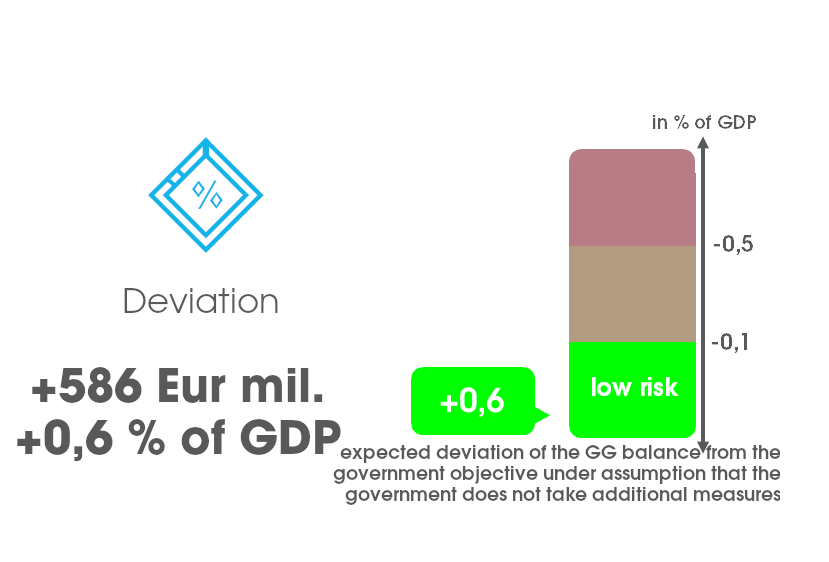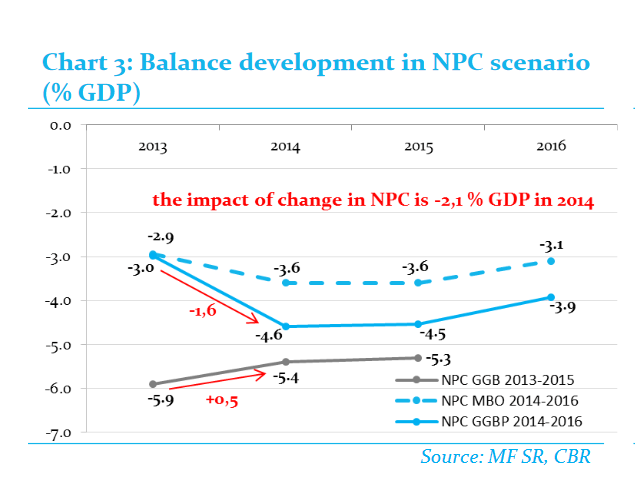Also thanks to one-off revenues, gross debt reached 51.9 % of GDP, 0.2 % of GDP below the budgeted forecast, and remained in the first sanction zone under the debt rule.
At the time of its approval, the budget contained risks with both positive and negative impacts. The deficit fell below the budgeted level thanks to the positive effects amounting to 2.4 % of GDP, mainly due to higher tax revenues, lower expenditures on co-financing and transfers to the EU budget, as well as better fiscal performance of municipalities. On the other hand, the total impact of negative effects on the general government budget reached 2.1 % of GDP.
Most of the negative risks identified by the CBR have materialised indeed, even beyond the original estimates. The most significant negative risks included in particular shortfalls in revenues from the sale of CO2 allowances, financial corrections to EU funds, or higher expenditures in the healthcare sector. Moreover, the government implemented additional expenditures, which were partly financed from the budgeted reserves. The risks related to capital expenditures of municipalities have not materialised. The risk associated with extraordinary dividends still remains; the CBR quantified it at EUR 156 million. If this risk is being confirmed in the autumn notification, the deficit could rise by 0.2 % of GDP.



